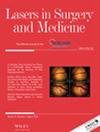The Application of a Novel Intense Pulsed Light in the Treatment of Rosacea-Like Mice
Abstract
Objectives
Rosacea is a chronic inflammatory disease that severely affects the quality of life of patients. Intense pulsed light (IPL) has been widely used in treating the erythema and telangiectasia in rosacea patients. However, the mechanism of its use is poorly understood. Our study objectives were to (i) assess the characteristic histological changes in animal models of rosacea with IPL over a microsecond pulse width, (ii) compare the effectiveness of different filter IPL irradiation.
Methods
We utilized a mouse model of rosacea by injecting the antimicrobial peptide LL-37, with IPL operating over a dose of 10 J/cm2 and several filter: 560–950 nm, 700–950 nm and dual wavelengths range (530–650 nm and 900–1200 nm). The single pulse was set to ten sub-pulses with a pulse width of 700 μs and delay time of 300 μs, respectively. Two treatment sessions were performed with a 24-h treatment interval. The erythema scoring criteria were used to evaluate the improvement in erythema before and after treatment. The number of blood vessels, inflammatory cells, and skin stratum corneum and keratinocyte permeability were also assessed.
Results
IPL significantly improved the erythema in rosacea-like mice. The use of a dual band filter at wavelength of 530–650 and 900–1200 nm significantly reduced the number of neutrophils in HE staining. Immunohistochemistry staining of CD31 confirmed the reduction of blood vessels. Also, the number of mast cells was reduced markedly with dual wavelength range and 700–950 nm. In addition, skin stratum corneum and keratinocyte permeability improved with 530–650 and 900–1200 nm.
Conclusions
This novel IPL exhibited advantages in anti-inflammatory and repairing the permeability barrier of the rosacea-like mice skin. Photobiomodulation could potentially serve as the underlying mechanism of the novel IPL in the treatment of rosacea. It is a promising treatment option for rosacea.

 求助内容:
求助内容: 应助结果提醒方式:
应助结果提醒方式:


